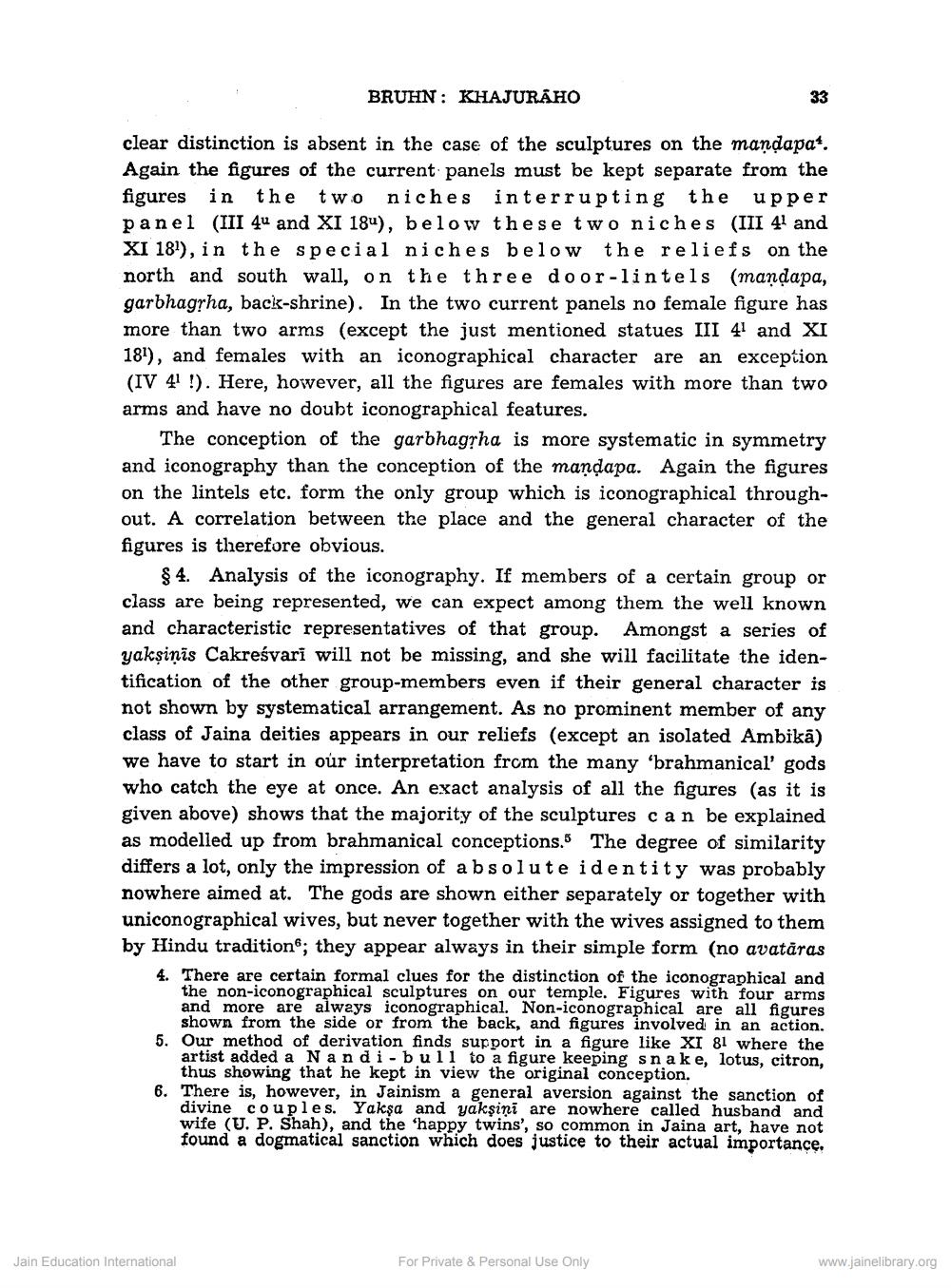________________
BRUHN: KHAJURAHO
clear distinction is absent in the case of the sculptures on the mandapa-. Again the figures of the current panels must be kept separate from the figures in the two niches interrupting the upper panel (III 44 and XI 18u), below these two niches (III 41 and XI 18), in the special niches below the reliefs on the north and south wall, on the three door-lintels (mandapa, garbhagsha, back-shrine). In the two current panels no female figure has more than two arms (except the just mentioned statues III 41 and XI 181), and females with an iconographical character are an exception (IV 41 !). Here, however, all the figures are females with more than two arms and have no doubt iconographical features.
The conception of the garbhagyha is more systematic in symmetry and iconography than the conception of the manqapa. Again the figures on the lintels etc. form the only group which is iconographical throughout. A correlation between the place and the general character of the figures is therefore obvious.
$ 4. Analysis of the iconography. If members of a certain group or class are being represented, we can expect among them the well known and characteristic representatives of that group. Amongst a series of yakșiņis Cakreśvari will not be missing, and she will facilitate the identification of the other group-members even if their general character is not shown by systematical arrangement. As no prominent member of any class of Jaina deities appears in our reliefs (except an isolated Ambika) we have to start in our interpretation from the many 'brahmanical' gods who catch the eye at once. An exact analysis of all the figures (as it is given above) shows that the majority of the sculptures can be explained as modelled up from brahmanical conceptions. The degree of similarity differs a lot, only the impression of absolute identity was probably nowhere aimed at. The gods are shown either separately or together with uniconographical wives, but never together with the wives assigned to them by Hindu traditione; they appear always in their simple form (no avatāras
4. There are certain formal clues for the distinction of the iconographical and
the non-iconographical sculptures on our temple. Figures with four arms and more are always iconographical. Non-iconographical are all figures
shown from the side or from the back, and figures involved in an action. 5. Our method of derivation finds support in a figure like XI 81 where the
artist added a Nandi - bull to a figure keeping snake, lotus, citron, thus showing that he kept in view the original conception. There is, however, in Jainism a general aversion against the sanction of divine couples. Yaksa and yakşiņi are nowhere called husband and wife (U. P. Shah), and the 'happy twins', so common in Jaina art, have not found a dogmatical sanction which does justice to their actual importance.
Jain Education International
For Private & Personal Use Only
www.jainelibrary.org




